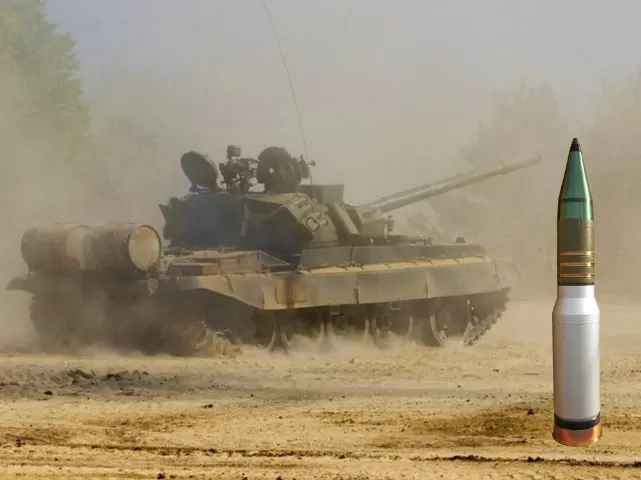
Why Tank Ammunition Still Matters
Despite the shift toward high-tech warfare, the demand for advanced tank and artillery ammunition is surging amid a global shortage. The M339 fills this gap with versatile capabilities tailored for military operations in urban terrain (MOUT).
While much of the defense technology field's focus has shifted to innovations like drones, electronic warfare (EW), and cyber warfare, the reality on the battlefield tells a different story. As defense strategies evolve to confront asymmetric threats, one resource remains as critical as ever – tank and artillery ammunition.
Elbit Systems, following its acquisition of Israel Military Industries (IMI) in 2018, now manufactures a broad portfolio of ammunition. This includes both NATO-standard and non-standard calibers, offering solutions for Western and Eastern platforms alike.
Danny, Marketing Director for Land Ammunition at Elbit Systems, explains the surging demand for tank and artillery rounds, their strategic role in today’s combat, and the 120mm tank ammunition series that continues to prove its important necessity.
A Combat-Proven Cartridge
The M339 is a 120mm high-explosive, combat-proven, multi-purpose (HE-MP-T) tank cartridge, suitable for a wide range of platforms. Weighing approximately 27 kilograms and measuring 984mm in length, it is compatible with NATO-standard smoothbore guns such as those used on the Leopard 2, Abrams M1A1/A2, and Merkava III & IV.
The M339 can engage targets at ranges of up to 5 kilometers and is capable of penetrating 200mm of double-reinforced concrete, with remarkable accuracy aided by its stabilizing system which contains 6 fins.
Despite the predominance of urban conflicts, where infantry often takes the lead, Danny emphasizes that tanks and artillery remain indispensable. "Even in the tightest urban environments, tanks provide unmatched firepower and protection for ground forces. Their armor shields the crew, and the ammunition delivers precise and devastating results against fortified positions," he explains.
Global Shortages, Strategic Impact
The shortage of tank and artillery ammunition is being felt across global military forces, as these rounds are important for both operational readiness and sustained combat situations. Danny highlights that this shortage is one of the key challenges. "We are seeing increased demand for these munitions, particularly for NATO 120mm rounds."
As militaries face this shortage of critical ammunition, Elbit Systems is ramping up its production and expanding its offerings. In addition to the M339, the company's ammunition portfolio is continually evolving, aiming to meet demands and integrate seamlessly with global platforms.
"Whether it’s for training or live combat, we’re committed to ensuring that military forces around the world have access to reliable, precise, and versatile ammunition," Danny emphasizes.
Targeting Enemies
The M339 is well-suited for symmetric and asymmetrical combat environments. It features an electronic fuze that can be programmed to function in three distinct modes, each designed for specific combat scenarios, such as breaching walls to allow infantry entry or neutralizing enemy forces hiding in reinforced structures and defeating vehicles.
One mode, Point Detonation (PD), is designed to detonate upon immediate impact, making it ideal for direct strikes on lightly armored vehicles or barriers that need to be quickly cleared. This mode is often deployed when tanks must break through obstacles to provide infantry with a clear path during urban assaults.
In contrast, the most advanced mode is Point Detonation Delay (PDD) which allows the projectile to penetrate a structure or fortification before detonating. This delay is crucial for targeting enemies hiding behind reinforced structures, such as bunkers or fortified buildings and against a variety of vehicles such as Armored Personnel Carriers (APC). By ensuring the explosion occurs behind the target, this mode enhances lethality.
The third mode of operation is Air Burst (AB). In this mode, the warhead detonates above the ground, dispersing over 6,500 steel and tungsten fragments over a wide area. "This mode is highly effective against infantry enemy and AT/ATGM squads in the open or soldiers taking cover behind light protection," Danny explains. "The controlled fragmentation ensures broad coverage at high density, making it difficult for enemy forces to avoid."
The projectile is precisely fired at a specific floor in a structure where the enemy is located, aiming to neutralize them while minimizing collateral damage. In certain cases, the round is used to collapse an entire building where the enemy is positioned and poses a threat to our forces. "It’s a multipurpose round designed to eliminate a variety of threats on the modern battlefield. It enhances the firepower of armored forces especially in combined forces operations while also providing logistical advantages," Danny concludes.
The content of the article does not constitute business or financial information about Elbit Systems Ltd. (the "Company") and is not intended to be a basis for making investment decisions in the Company's securities. In order to obtain business or financial information about the Company, please refer to the reports and filings that the Company regularly publishes on the website of the U.S Securities and Exchange Commission (EDGAR) and on the notification system of the Tel Aviv Stock Exchange (Maya).
The article may contain forward-looking statements such as estimates, forecasts, estimates, plans, etc. that refer to future events that are considered forward-looking information as defined under the securities laws of Israel and the United States. There is no certainty that such information will be realized, in whole or in part, and the actual result may differ from what was presented in the article, among other things due to its dependence on external factors that are not under the control of the Company and that cannot be evaluated in advance. The forward-looking statements are based on the Company's estimates at the time of publication, and the Company has no obligation to update or correct this data.

